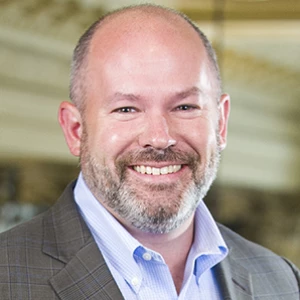As the automotive industry adjusts to the disruptions caused or accelerated by the COVID-19 pandemic, its focus is turning from short-term crisis management to more permanent shifts and how to emerge from the crisis tougher and better than before. Automotive companies must figure out how to be the best at the game today while also positioning themselves to win the long game. It’s a difficult challenge—and to meet it, they need to ensure that their employees are engaged, are clear on where the organization is headed, and are inspired to help get there. One of the most effective ways to increase employees’ alignment and engagement is to give them a powerful purpose. And we have the research to prove it.
The Value of Purpose
Purpose gives companies that are developing and deploying competitive strategies a reliable North Star to help employees understand the thinking behind tough choices—and it encourages them to stand up and deliver. When employees understand where the company is headed and why, they can make the right decisions to help move in that direction.
This is true for all companies, but let’s look closely at what it means in the automotive industry. The industry is in a state of extreme instability. Over the past few years, shifts in societal norms, regulatory requirements, and technology have been driving massive disruptions. We are witnessing a transition in vehicle design from traditional internal combustion engines to hybrids and electrification. We are also seeing sharp turns in consumer behavior as ride sharing and connectivity options proliferate. New players are bringing new ways of thinking, starting with innovative applications of technology and software, and we foresee further changes occurring for years to come.
Over the next five to ten years, we will see companies and customers change significantly. Sustainability will become an imperative, pushing the electric vehicles to the forefront and driving the need for further technological, digital, and software progress. Players across the industry will need to attract and retain the best talent, create greater engagement, and provide more clarity and alignment to successfully meet the challenges of the next decade.
That is exactly what purpose does, especially for large, complex organizations in the automotive sector.
Ease of Recruiting. Traditional automotive OEMs and Tier 1 suppliers are increasingly competing for digitally skilled talent from Gen Z in order to create more innovative and competitive offerings. They want the new generation to help drive a more agile, faster-moving culture. Gen-Zers expect potential employers to act with purpose: 83% of them view purpose as a core consideration in their decision about where to work, and 75% say that they make sure a company acts when it takes a stance on an issue.
Increased Engagement and Retention. Having a strong company purpose also helps a company increase its engagement with people who already work there. Employees who are connected to their employer’s purpose are 65% more likely to be fulfilled by their work, and employees who are personally fulfilled by their work outperform 80% of their peers. Even more importantly, fulfilled employees are twice as likely to stay at their job for more than five years, reducing turnover costs and increasing productivity.
Organizational Alignment and Focus. What makes purpose such a powerful tool? One thing we’ve seen repeatedly in our decades of work with hundreds of clients on issues related to purpose is that purpose provides clarity and direction when an obstacle appears. Leaders who can offer a powerful narrative about why things need to change find it much easier to get everyone on board. To move the company in the right direction, employees need to understand where it is going, how to get there, and why that destination is desirable.
Together, BCG and BCG BrightHouse help companies uncover their why—their timeless purpose—and then we help them develop a narrative and a strategy to tie it all together. We mobilize organizations to make bold changes to embed purpose in strategy, culture and brand while bringing the necessary rigor to keep them on the right path. This groundwork enables organizations to develop a bigger and brighter vision of their future. For an example of how this can work in the automotive industry, consider a recent focus on purpose undertaken by Mercedes-Benz.
Case Study: Mercedes-Benz
With shared, autonomous, connected, and electric mobility causing a radical shift in the dynamics of the automobile industry, Mercedes needed to identify a North Star to clarify its role in the world and guide its people through significant challenges over the next decade. After extensive digging to excavate their purpose, it became clear that Mercedes exists to “First Move the World.” That bold ambition provided the foundation for a bold new strategy.
The plan, called Ambition 2039, called for “a fundamental transformation of our company within less than three product cycles” and put Mercedes-Benz on the road to sustainable individual mobility. This new strategy, guided by its purpose, involves winning in the marketplace by winning the battle for talent. Mercedes will need people with new skills and capabilities who can compete in the bionic business models of the next decade while retaining people with the core knowledge that has fueled the company’s success over the previous decade. And these changes will require purpose to provide every leader and employee with clarity and alignment to deliver their Mercedes ambition.
Purpose gives employees meaning that can help them through tough times. It also helps employees focus on the organization’s vision as they accelerate through the tough times. Purpose reminds them that the automotive industry is more exciting than ever. The emergence of new technologies and business models has made new forms of mobility possible, upending traditional business models and introducing exciting new challenges. Companies that have the courage to think big, challenge the status quo, and lead with a well-defined purpose will be best positioned to realize their full potential in the automotive industry of the future.












